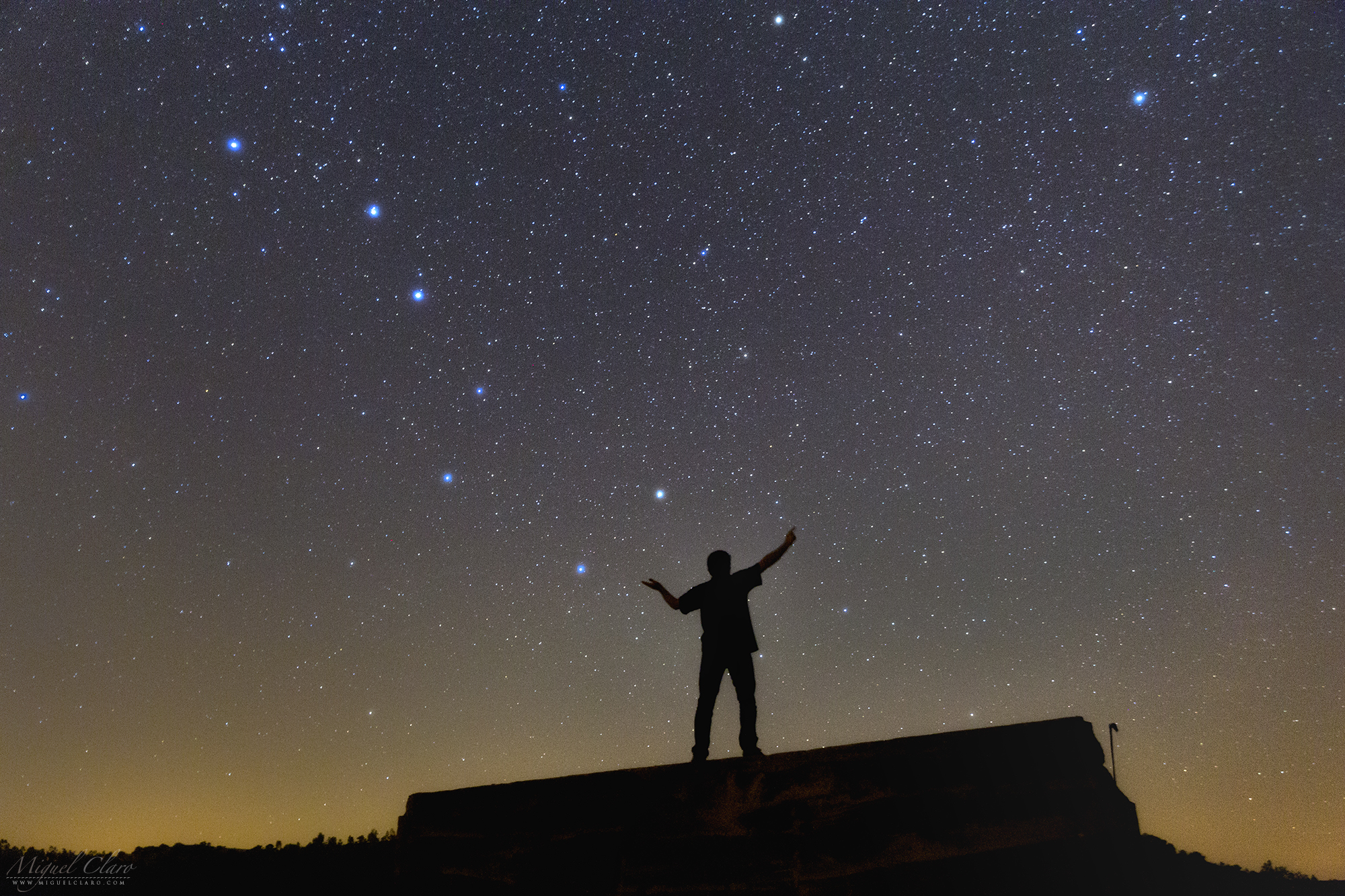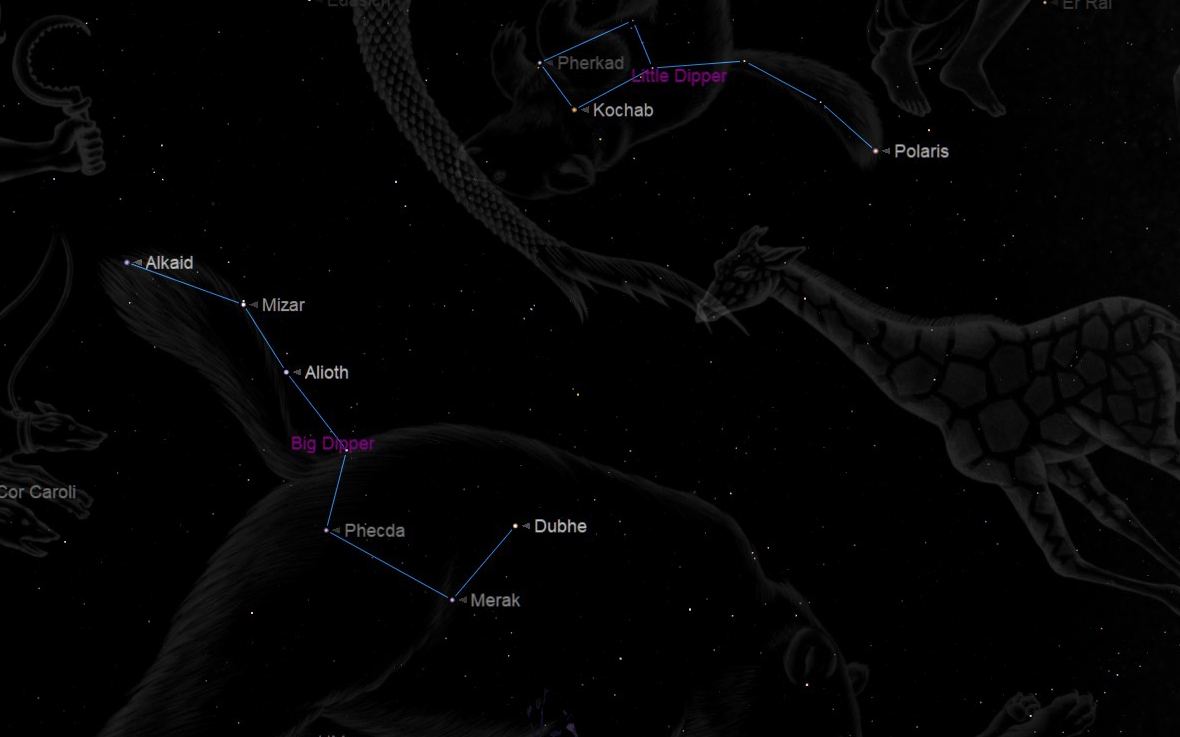A Skywatcher Shows You Where to Find the North Star (Photo)

Miguel Claro is a professional photographer, author and science communicator based in Lisbon, Portugal, who creates spectacular images of the night sky. As a European Southern Observatory photo ambassador, a member of The World At Night and the official astrophotographer of the Dark Sky Alqueva Reserve, he specializes in astronomical skyscapes that connect Earth and the night sky. Join Miguel here as he takes us through his photograph "A Stargazer Shows Where to Find Polaris in the Night Sky."
A night scene captured in Achada do Gamo, part of the Dark Sky Alqueva Reserve near Mértola, Portugal, shows the silhouette of a stargazing enthusiast who is trying to show us where to find Polaris, the North Star. While Polaris is far from being the brightest star in the sky, finding it is not as hard as it may seem!
On the left side, the colorful stars Alkaid, Mizar-Alcor, Alioth, Megrez, Phecda, Merak and Dubhe are visible. These are the main stars that make up the Big Dipper, a famous star pattern in the constellation of Ursa Major (the Great Bear). The Big Dipper is one of the easiest constellations to identify in the night sky, and it serves as a useful reference point for both novice skywatchers and more experienced astronomers, helping them to locate the North Star. [Constellations of the Night Sky: Famous Star Patterns Explained]
To find Polaris, use Merak and Dubhe, the so-called "pointer" stars in the bowl of the Big Dipper. In this photo, the stargazer's left hand is pointing to Merak, and the next-nearest star to Merak is Dubhe. Draw an imaginary line between these two stars and extend it out for about 5 times the distance between them, and you will bump into Polaris, located in the upper-right corner of the image, where the right arm of the stargazer is also pointing.
Editor's note: If you captured an amazing astronomy photo and would like to share it with Space.com for a story or gallery, send images and comments to managing editor Tariq Malik at spacephotos@space.com.
To see more of Claro's amazing astrophotography, visit his website, www.miguelclaro.com. Follow us @Spacedotcom, Facebook and Google+. Original article on Space.com.
Breaking space news, the latest updates on rocket launches, skywatching events and more!
Miguel Claro is a professional photographer, author and science communicator based in Lisbon, Portugal, who creates spectacular images of the night sky. As a European Southern Observatory photo ambassador, a member of The World At Night and the official astrophotographer of the Dark Sky Alqueva Reserve, he specializes in astronomical skyscapes that connect Earth and the night sky.


